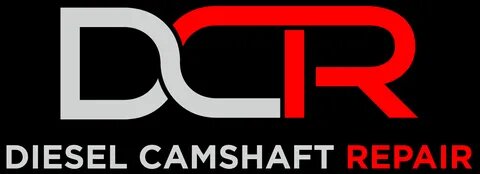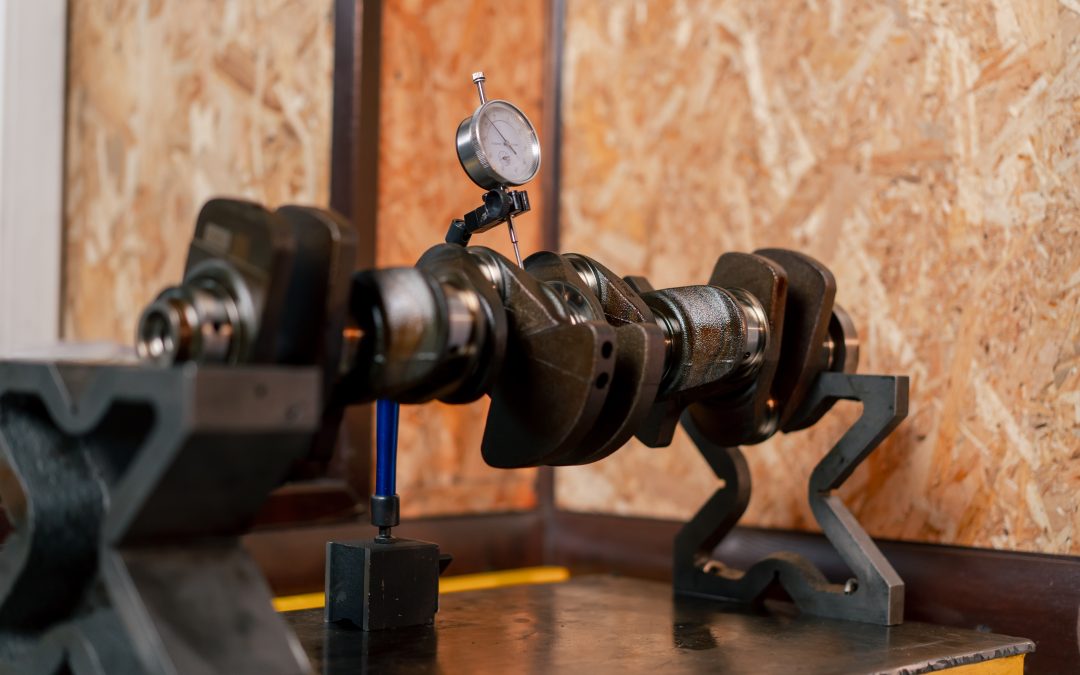The design and specifications of a camshaft are pivotal factors that directly influence how an engine performs. The camshaft controls important engine aspects like power, torque, and drivability by managing the timing and duration of the intake and exhaust valve openings.
Understanding the terminology associated with camshaft design is essential for comprehending its role in shaping an engine’s performance. Let’s explore the key terms involved in camshaft specifications to gain insight into their profound impact on engine dynamics.
Lift: Lift refers to the maximum height the camshaft’s lobes raise the engine’s valves. It’s usually measured in millimeters or inches. Higher lift values result in more airflow into and out of the combustion chamber, which can increase power output.
Duration: Duration refers to the amount of time, usually measured in degrees of crankshaft rotation, that the valve is kept open during the engine’s cycle. It includes both the intake and exhaust strokes.
Longer duration cams keep the valves open for a greater portion of the engine’s cycle, allowing more air and fuel mixture to enter the combustion chamber. This can improve high-end power but may reduce low-end torque.
Lobe Separation Angle (LSA): Lobe separation angle is the number of degrees between the maximum lift points of the intake and exhaust lobes on the camshaft. It affects the engine’s idle quality, vacuum characteristics, and where the engine makes its power.
A narrower LSA (smaller angle) typically results in higher engine RPM power gains and a rougher idle, while a wider LSA (larger angle) promotes low-end torque and a smoother idle.
These specifications are carefully chosen based on the desired performance characteristics of the engine and its intended use, whether it’s for street driving, drag racing, or other applications. They’re often optimized through dyno testing and engine simulation software to achieve the desired balance of power, torque, and drivability.
First element of Camshaft Design The “Lift”
The lift of a camshaft is a critical parameter in determining an engine’s performance characteristics. Camshaft lift refers to the maximum displacement or distance that the camshaft’s lobes push the valve off its seat during operation. It’s essentially the measure of how far the valve is lifted from its closed position.
Measurement Units: Lift is typically measured in either millimeters (mm) or inches (in). The lift value is determined by the profile of the camshaft lobe, which dictates the maximum distance the valve is opened.
Role in Engine Performance:
Airflow: Lift directly influences the amount of air and fuel mixture that can flow into and out of the combustion chamber. Higher lift allows for greater airflow, which can increase engine power output, especially at higher engine speeds.
Valve Timing: Lift also affects valve timing. A higher lift means the valve opens further and closes later in the engine cycle. This can alter the engine’s volumetric efficiency, helping to optimize performance characteristics such as torque curve and power delivery.
Combustion Efficiency: By controlling the intake and exhaust valve opening and closing events, lift plays a role in optimizing combustion efficiency, which can impact fuel consumption, emissions, and overall engine performance.
Factors Influencing Lift:
Camshaft Profile: The shape and design of the camshaft lobes determine the lift characteristics. Camshaft profiles can vary widely, from smooth and gradual to aggressive and rapid.
Valve Train Components: Lift is also influenced by other components of the valve train, such as valve springs, rocker arms, and pushrods (if applicable). These components must be capable of handling the increased lift without experiencing issues like valve float or coil bind.
Performance Trade-offs:
Increasing lift can improve high-end power and top-end performance but may sacrifice low-end torque and drivability. Excessive lift can lead to valve train instability, increased wear, and potential component failure if not properly matched with supporting valve train components.
Optimization:
Lift specifications are carefully chosen based on the engine’s intended use, desired performance characteristics, and other factors like engine displacement, compression ratio, and induction system design.
Engine builders often experiment with different lift profiles and combinations during dyno testing and tuning to find the optimal balance between power, torque, drivability, and reliability.
Second element on Camshaft Design The”Duration”
The duration of a camshaft is a critical specification that profoundly influences an engine’s performance characteristics. It refers to the total amount of time, typically measured in degrees of crankshaft rotation, that the intake and exhaust valves remain open during each combustion cycle. Understanding camshaft duration is essential for optimizing an engine’s power delivery, efficiency, and overall behavior.
Measurement Units: Duration is typically expressed in degrees of crankshaft rotation. It’s measured from the point where the valve begins to open (commonly referred to as “lift-off”) to the point where it closes (“seat-on”). The total duration is calculated as the sum of the intake and exhaust durations.
Role in Engine Performance:
Valve Timing: Duration directly affects valve timing, which determines when the intake and exhaust valves open and close relative to the engine’s piston position. Optimizing valve timing through duration adjustments is crucial for maximizing airflow, cylinder filling, and scavenging efficiency, which directly impacts engine performance.
Power Band: Duration significantly influences an engine’s power band—the range of engine speeds over which it produces its peak power. Longer duration cams tend to shift the power band higher in the RPM range, favoring high-end performance, while shorter duration cams enhance low-end torque and drivability.
Performance Trade-offs:
High-End vs. Low-End Power: Choosing the appropriate duration involves balancing the desire for high-end power with the need for low-end torque. Longer duration cams can improve high-RPM performance but may sacrifice low-end power and throttle response.
Idle Quality: Duration also affects idle quality. Cams with aggressive duration profiles may result in a lopey idle, characterized by uneven engine speed fluctuations, which can be desirable for some performance applications but may be less suitable for daily driving.
Optimization:
Duration specifications are carefully selected based on factors such as engine displacement, compression ratio, cylinder head flow characteristics, and intended use (e.g., street driving, drag racing, or road course competition).
Engine builders often experiment with different duration profiles during dyno testing and tuning to find the optimal balance between power output, torque curve shape, drivability, and engine longevity.
Final element Lobe Separation Angle (LSA) on a Camshaft
The lobe separation angle (LSA) of a camshaft is a crucial specification that profoundly influences an engine’s performance and behavior. It refers to the number of degrees between the maximum lift points of the intake and exhaust lobes on the camshaft. Understanding the lobe separation angle is essential for optimizing an engine’s power delivery, idle quality, and overall efficiency.
Measurement Units: Lobe separation angle is typically measured in degrees and is determined by the design and phasing of the camshaft lobes. It represents the angular position of the camshaft relative to the crankshaft when the intake and exhaust valves reach their maximum lift points.
Role in Engine Performance:
Valve Timing: Lobe separation angle directly influences valve timing by determining when the intake and exhaust valves open and close relative to each other and to the piston position. A narrower lobe separation angle advances valve overlap, allowing both intake and exhaust valves to be open simultaneously during part of the engine cycle. This promotes scavenging of exhaust gases and can enhance high-RPM performance.
Idle Quality: Lobe separation angle also affects idle quality. A wider lobe separation angle typically results in a smoother idle by reducing valve overlap, while a narrower angle can lead to a more aggressive, lopey idle characteristic of high-performance engines.
Performance Trade-offs:
High-End vs. Low-End Power: The choice of lobe separation angle involves a trade-off between high-end power and low-end torque. Narrower lobe separation angles tend to improve high-RPM performance by increasing valve overlap and promoting better cylinder filling at high engine speeds. However, this can come at the expense of low-end torque and idle quality.
Idle Stability: Wide lobe separation angles contribute to stable and smooth engine idling, which is desirable for street-driven vehicles and daily commuting. On the other hand, narrower lobe separation angles may result in a more aggressive idle characteristic, which can be preferred in certain performance-oriented applications.
Optimization:
Lobe separation angle specifications are carefully selected based on factors such as engine displacement, cylinder head design, intake and exhaust system characteristics, and intended use of the vehicle.
Engine builders often experiment with different lobe separation angles during dyno testing and tuning to achieve the desired balance between high-end power, low-end torque, idle stability, and overall drivability.
These specifications are carefully chosen based on the desired performance characteristics of the engine and its intended use, whether it’s for street driving, drag racing, or other applications. They’re often optimized through dyno testing and engine simulation software to achieve the desired balance of power, torque, and drivability.

